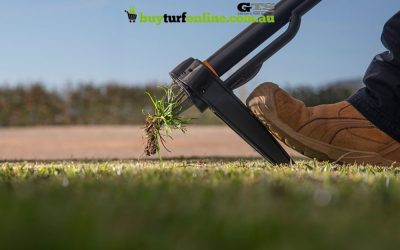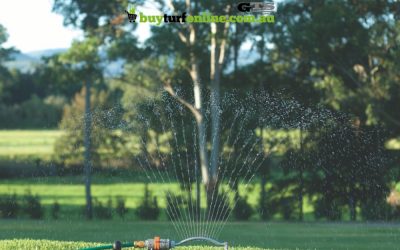When To Cut New Grass
Quick Links
Cutting New Grass
A lush lawn can greatly enhance the aesthetic value of your home.
In Australia, some of the most popular grass types for lawn beautification include DNA Certified Sir Walter Buffalo Grass, Eureka Kikuyu, Nullarbor Couch Grass and TifTuf Hybrid Bermuda among others.
When properly cared for, these grasses can give you a lush, green and healthy lawn.
Cutting grass is one of the vital aspects of taking care of your lawn. If you have an established lawn, you probably already know the right height of the grass and when to cut it.
However, if you have a new lawn with new grass, you may still be wondering when the right time is for mowing. Timing is important when it comes to cutting new grass.
Perfect Time for First Mowing
Wait For The Grass to Develop Strong Roots
Your newly seeded lawn needs consistent watering for the turf grass to develop a strong root system. Even a new drought-tolerant lawn needs watering to keep the soil moist.
You need to keep the soil moist because if it is too dry, the new turf will frazzle in the heat before it has time for its roots to establish in the ground.
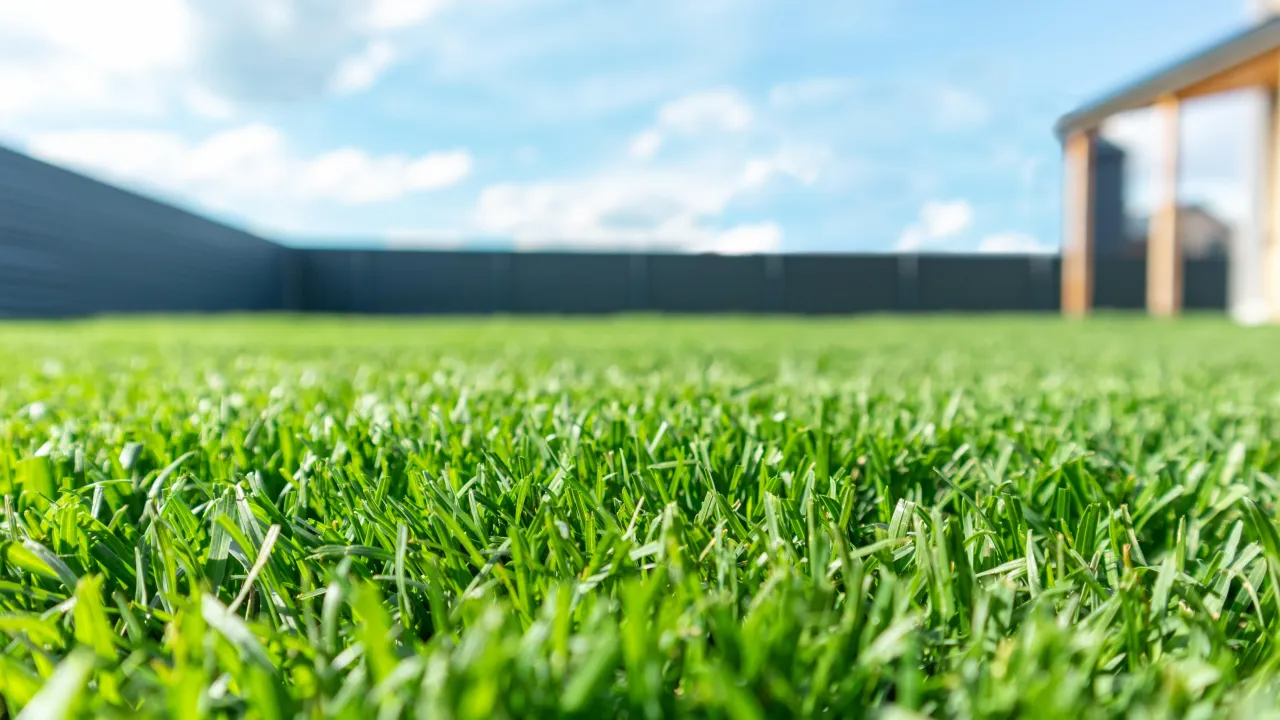
Healthy new grass can take up to 8 weeks before it achieves its mowing height. If you do your first cut too soon, it can pull up your newly laid turf.
It is safe to cut your new lawn when the roots have established in the ground, and you can no longer easily lift the turf.
If you mow new lawns when the grass is still under the recommended grass height, it can have serious consequences.
It may lead to brown patches of grass in your yard which could eventually die and promote the growth of weeds.
How to Cut New Grass
When your new turf is ready for mowing, it’s time to get your mower out.
Before you start to cut, check first if your lawn mower has sharp blades. When you are working on new lawns, you need sharp mower blades to avoid hurting the turf.
A blunt blade can cause damage to the new turf, and put it at risk of disease.
Here are some best practices when mowing a new lawn:
1. Be careful not to cut more than a third of the turf height
Part of basic lawn care is to never cut the turf more than one-third of its height. Doing so reduces the stress you put on the roots when you mow.
It also allows the roots to develop a deeper system for absorbing water and nutrients from the soil, keeping your lawn healthy.
Moreover, it gives the turf enough leaf cover that protects it from dying due to direct exposure to the sun.
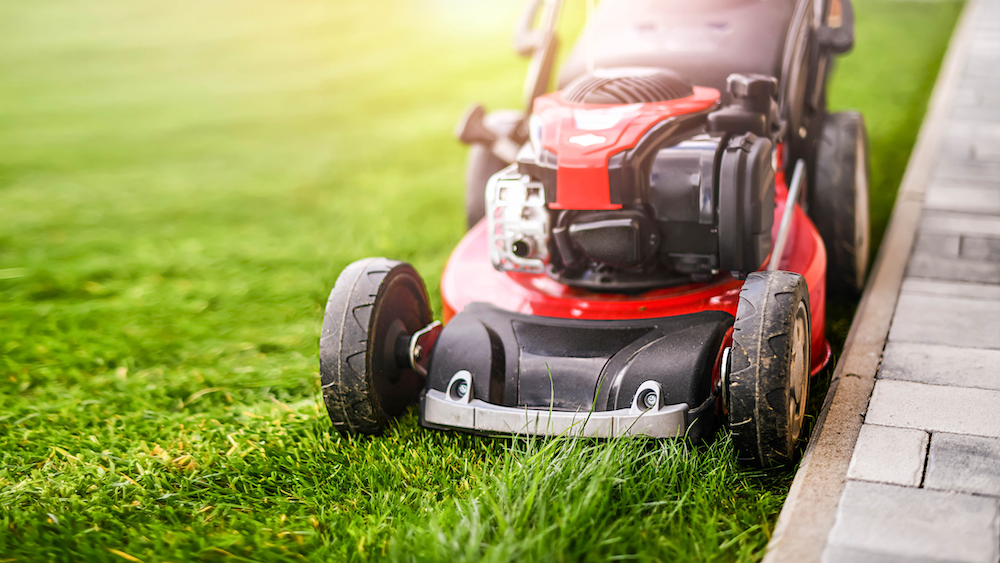
For best results, try to cut as high as your lawn mower can go on your first mow and then reduce the height a bit down the next time you cut.
Do it for the next few weeks until you have a fully established grass, at such time you can start trimming it down to the particular height recommended for your lawn variety.
2. Follow Proper Mowing Technique
Mow the edge of your lawn first. It’s a good idea to take two passes on the outside edges of your lawn.
Doing this gives you enough room to turn your mower around. You can then pick a mowing pattern that works for you.
One of the easiest patterns to mow the grass is by creating stripes.
You can do this by doing one pass and then making a 180-degree turn to create the next pass. Repeat the process until your entire lawn is mowed.
3. The Best Time to Mow is Mid-Morning
The ideal time of the day to mow is in the mid-morning because during this time, the lawn is typically dry and the sun is not intense anymore.
This gives your lawn enough time to recover without getting too damp from frost, or during the evening.
4. Leave Grass Clippings On Your Lawn
Leave some grass clippings on your lawn as they can add essential nutrients to the soil. As for the excess clippings, you can add them to your compost pile.
They have high nitrogen content which is one of the essential elements that plants need.
The only thing to remember is that if your grass is wet when you mow, damp grass clippings can lead to lawn diseases.
While you should avoid mowing wet grass, if you do, it’s best to remove all grass clippings afterwards.
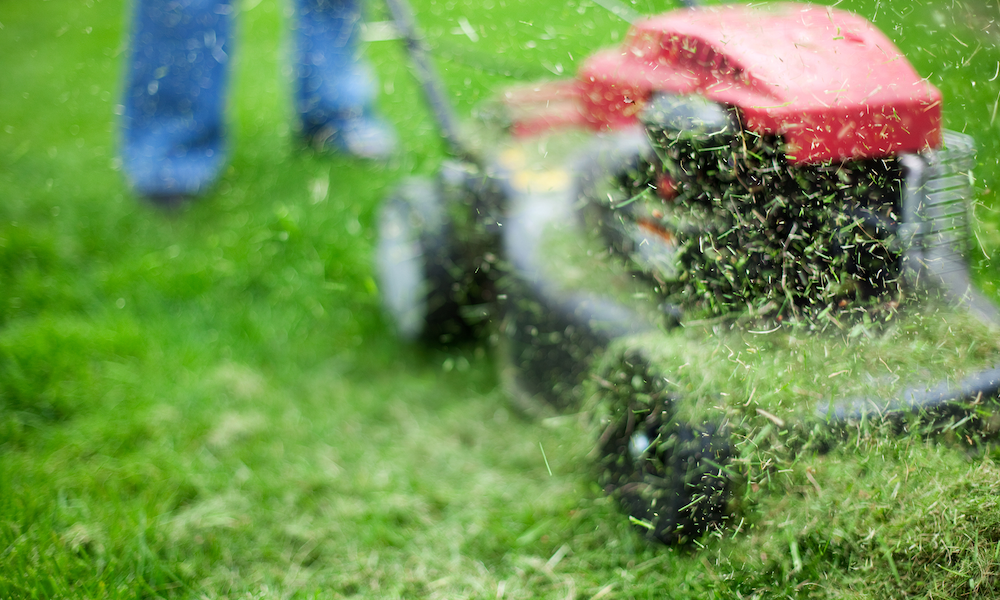
Benefits of Cutting New Grass
1. Even Growth
When you mow your lawn regularly, it keeps the leaves at the same height, giving them all access to the sun. This in turn promotes even growth.
When the grass grows taller again, the shorter grass that is closer to the ground will have limited access to the sun, leading to uneven growth.
Mowing regularly could keep the uniform growth of green grass on your new lawn.
2. Makes the Lawn Thicker
Another reason why you need to mow new grass is that it promotes horizontal growth instead of vertical growth. The end result is thicker grass with more established roots.
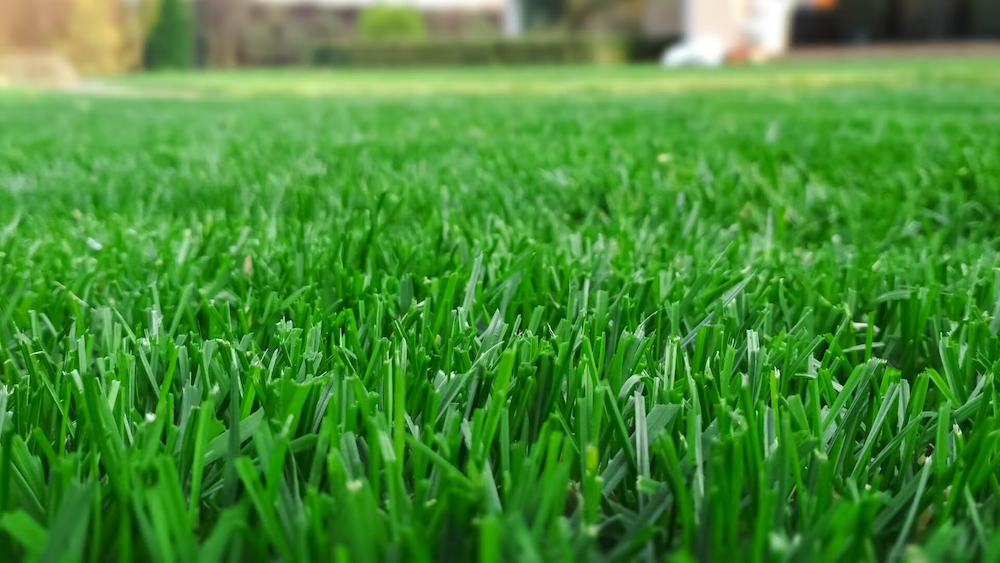
3. Minimises the Growth of Weeds
Weeds are opportunistic and they grow when conditions are favourable, and any vacant spot on your lawn is their favourite.
They typically do not grow well on an overseeded lawn and where the yard has thicker grass.
Summary
Mowing new grass is important to have a healthy lawn. However, if you’re doing it for the first time, you need to wait for the right time.
After laying the turf, it could take several weeks for the grass to be ready for its first cut. Watering could help the grass grow quickly and consistently until they reach its recommended height.
Watering and mowing grass are just two of the most essential and critical elements to having healthy lawns. You could do these tasks on your own, or you could also hire a lawn care company to do it for you.
For more handy advice about lawn care, visit our lawn care guides today.

read more!
recent posts
Poolside Turf: Choosing and Maintaining Grass Around Pools
There’s nothing quite like stepping out of a swimming pool onto soft, lush grass. But when it comes to finding the best grass for around a pool, not all lawns are created equal. Chlorine pools, heavy foot traffic, and the unforgiving Australian sun can take a toll on...
Keeping Your Lawn Green and Healthy During the Summer Heat
Discover the best grass options for your lawn with our complete guide. Make informed choices for a lush, healthy yard. Read more to find your ideal grass!
Summer Lawn Weeds: Prevention and Management
Discover the best grass options for your lawn with our complete guide. Make informed choices for a lush, healthy yard. Read more to find your ideal grass!
The Ultimate Watering Guide for Summer Lawns
Discover the best grass options for your lawn with our complete guide. Make informed choices for a lush, healthy yard. Read more to find your ideal grass!

Our Turf
TifTuf Bermuda
Buy Turf Online © 2019 All Rights Reserved. | Proudly Designed and Developed by Sydney ICT



